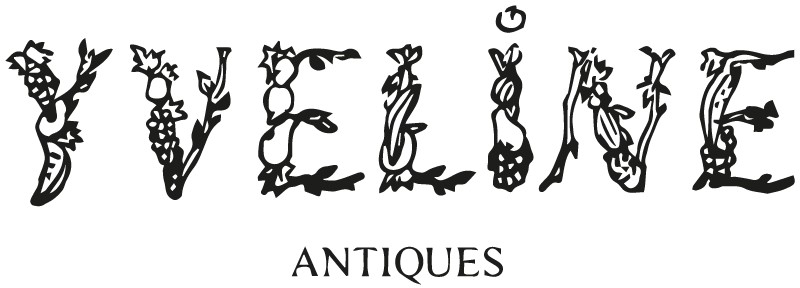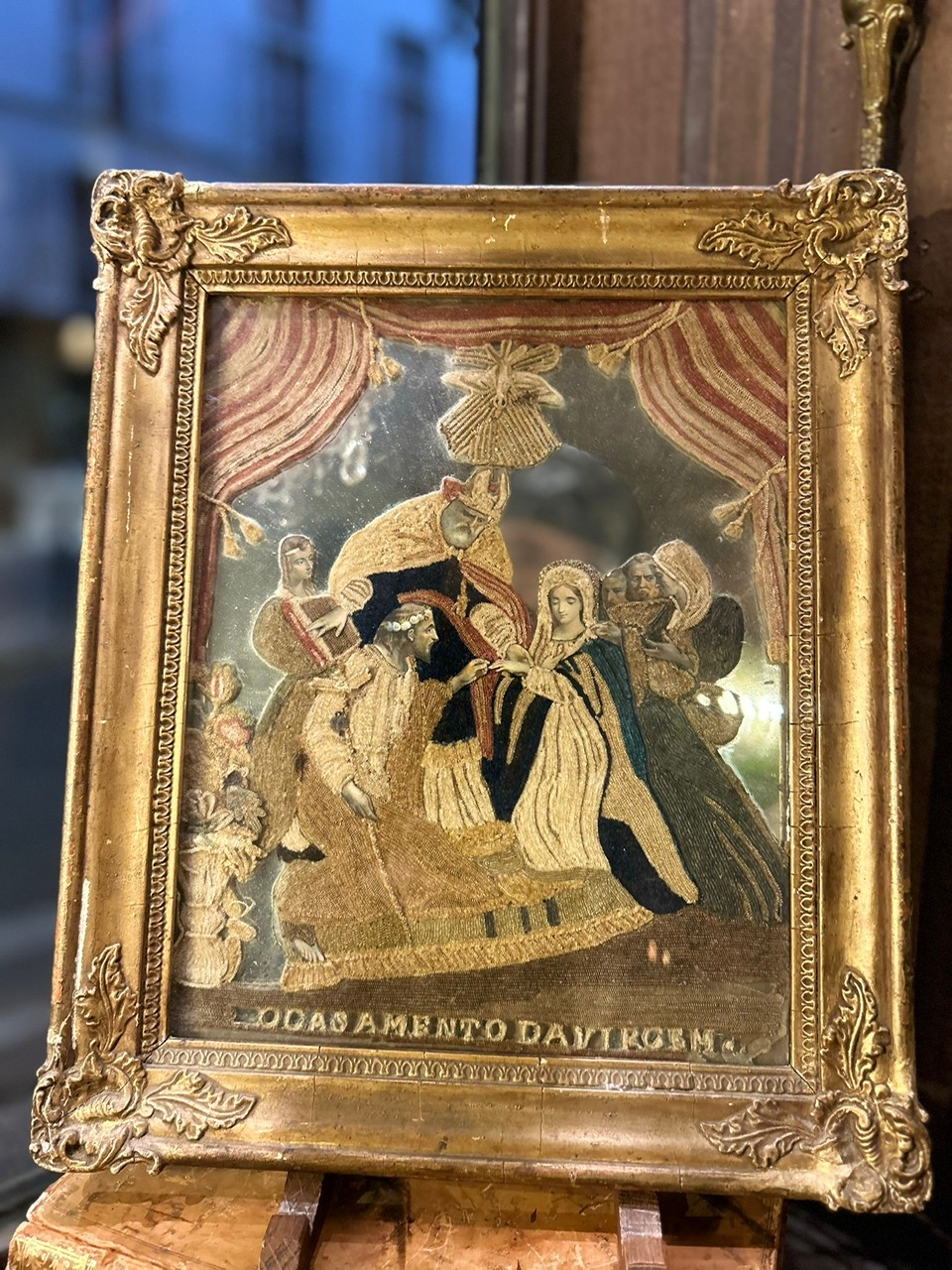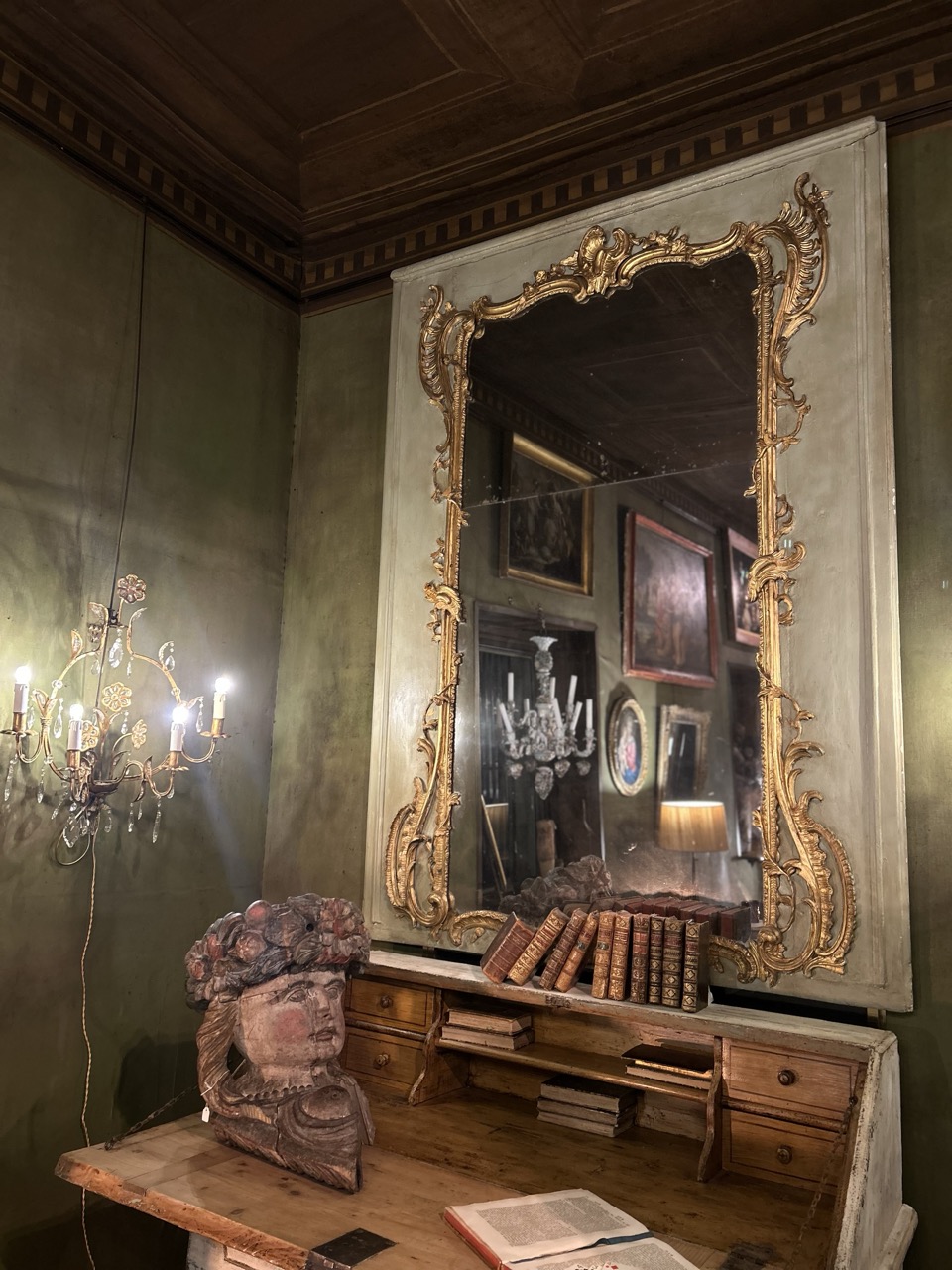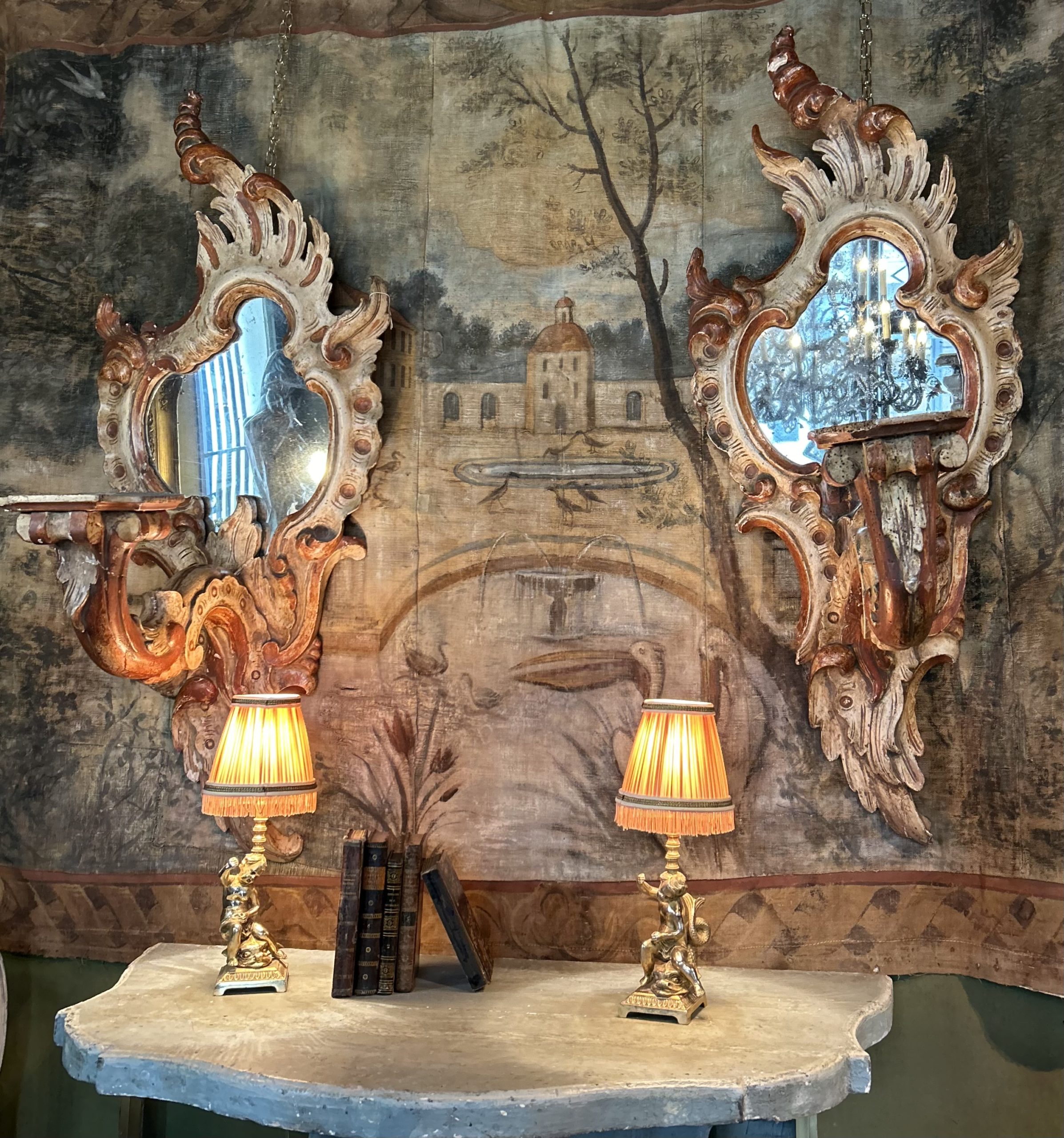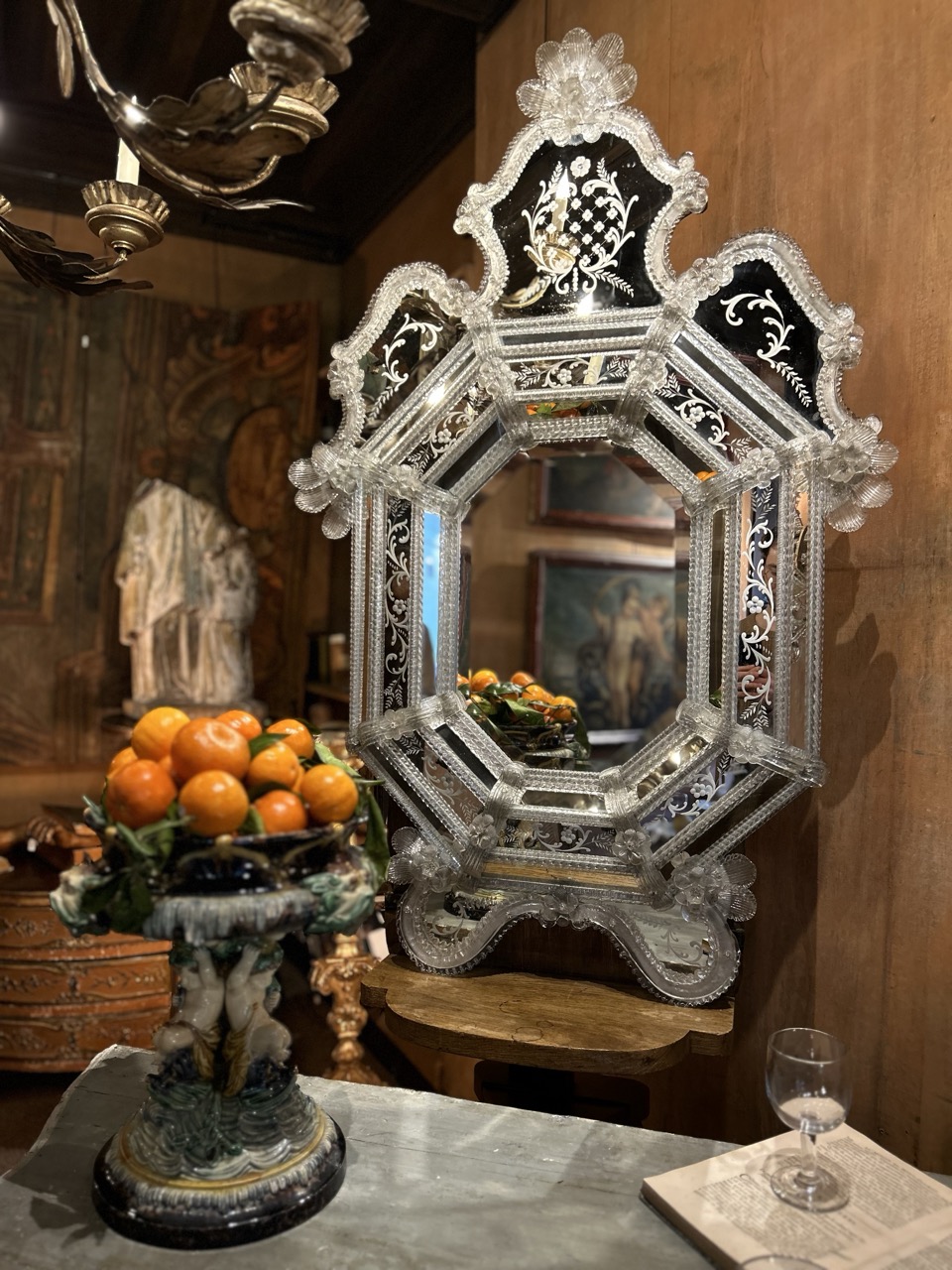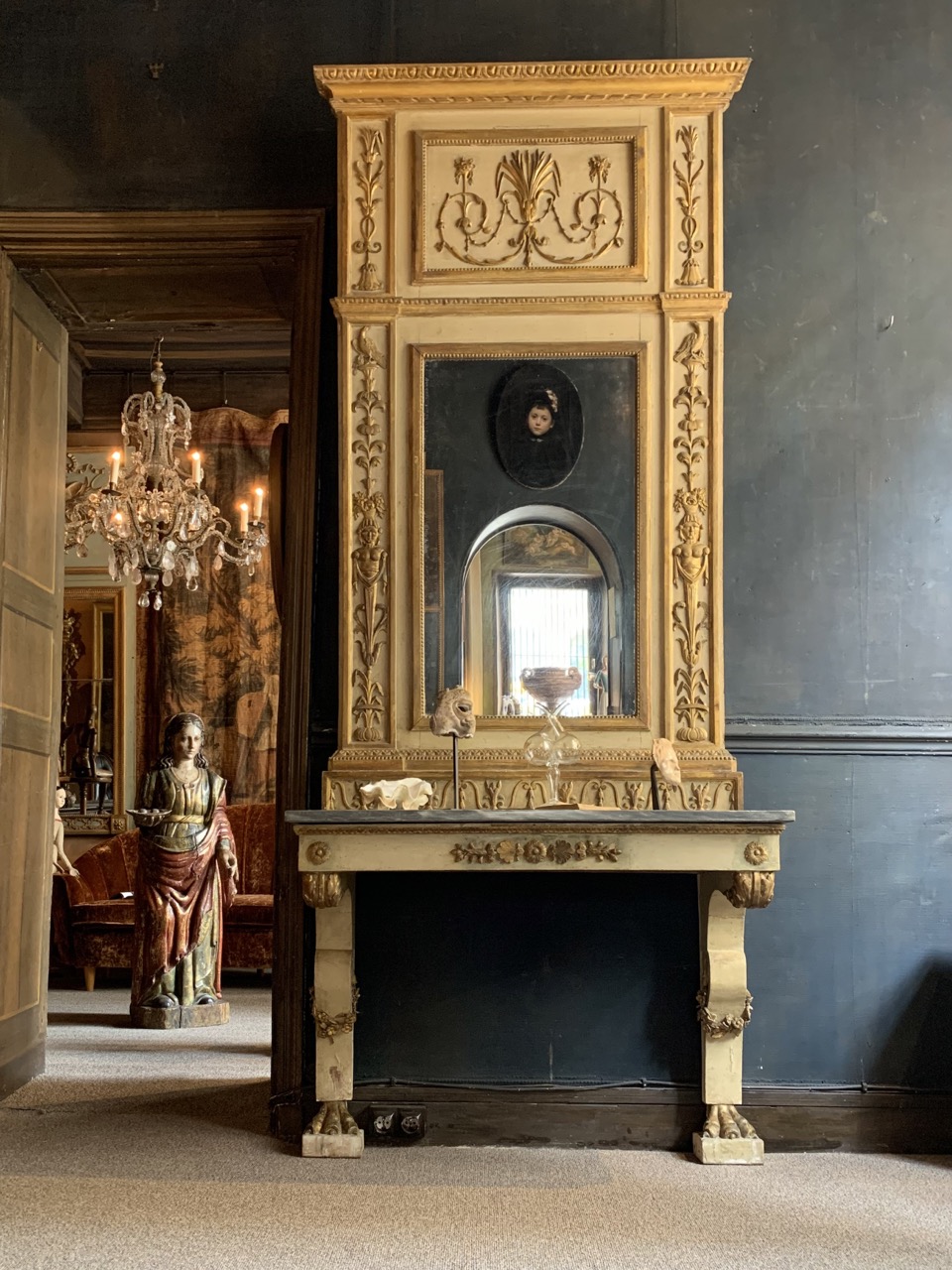Embroidery on the back of the mirror depicts a religious marriage of the Virgin Mary and Saint Joseph.
Northern Italy or France
Late 18th century
Richly carved and gilded wooden mirror with rocaille-patterned glazing beads and mercury glass.
Louis XV period, 18th century
Provence, France
Elegant Venetian églomisé mirror, richly decorated with a carved giltwood frame in the Rococo style.
18th century
Italy
Gilded polychrome carved wood mirror with mercury glass.
18th century
Italy
Rare and precious 18th-century piece is a mirror fixed under glass depicting the Virgin Mary.
France, 18th century
Important overmantel of gilded and carved woodwork, mercury glass.
18th century
Italy
Pair of scones with a central mirror and an arm of light in carved and lacquered wood with rocaille decoration of volutes, shells and foliage.
XVIII century
Venice, Italy
Beautiful octagonal mirror composed of a beveled mirror surrounded by 8 equally beveled sides, topped with a refined pediment carved in the shape of leaves.
Set consisting of a console and mirror, richly decorated with the characteristic motifs of the neoclassical style, with garlands, stylized acanthus leaves and female busts.
